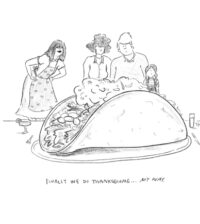In a small office at the Sonoma Police Department, YWCA counselor Yuka Kamiishi shows off a few T-shirts bearing various messages of pain and healing: “LEFT ME ALONE IN THE DARK” reads one, while another proclaims, “I am strong!”
The shirts – neatly packed into five boxes – were created by survivors of domestic violence, and will be displayed Saturday, Oct. 25 at Sonoma Plaza as part of the Clothesline Project during Domestic Violence Awareness Month.
Kamiishi began working as a victim advocate at the Sonoma Police Department in November 2000 to – among other duties – provide confidential support to victims, accompany them through court and law enforcement contacts and help them find safe, temporary housing. In 2004, Kamiishi – who was recently hired to provide similar help through the Sonoma County District Attorney’s office – expanded her services to include the entire Valley. Between June 2006 and July 2007, she tended to an average of two Sonoma Valley domestic violence victims every three days, but “those numbers, tragically, do not reflect all the victims who do not call for help,” she said.
According to a report delivered to the Sonoma City Council last month by Sonoma police Chief Bret Sackett, 536 out of 724 clients were successfully contacted by Kamiishi for service during the last fiscal year. She also reviewed 99 police reports within Sonoma and 218 within the Valley and outlying areas, facilitated 85 support groups and gave 45 presentations to local organizations.
The latter represents an important part of the counselor’s job – public outreach and education. And that’s where the Clothesline Project comes in, which Kamiishi describes as “a public display of T-shirts designed by the victims of domestic violence.”
“The purpose is to let the survivors express themselves about their experience … in a very visual way,” she said.
Now in its sixth year, the Clothesline Project was originally installed on the lawn in front of Sonoma City Hall. That made it easy for motorists to see, but difficult for pedestrians. The Oct. 25 display will be next to the Carnegie Library on First Street East and will feature just a small part of the total T-shirt collection.
“I wish I had the ability to display them all, but with [space] limitations, that’s not possible,” Kamiishi said.
Although some may ask why a victim chooses not to leave an unhealthy relationship, Kamiishi said it’s hard to generalize – some reasons include fear, shame, optimism that the situation will change, “or because they love their partners,” she said.
That apparent inaction can be frustrating for friends and family of abuse victims, but Kamiishi said expressing that frustration could actually make the situation worse – and that would-be helpers should educate themselves before offering criticism.
“If [the victims] could just leave, they would have,” Kamiishi said. “They’re already in a controlling situation – they don’t need that from family and friends. … You know how it feels good when someone listens, when they ‘get it?’ That’s what they need.”
Art means healing for domestic violence victims
More from What's HappeningMore posts in What's Happening »
- Cartoon by Hillary: “Finally We Do Thanksgiving…My Way”
- Permit Sonoma Recommends Decertification of the SDC Specific Plan Environmental Report and Abandoning the SDC Specific Plan
- Chinook Salmon Spotted in Valley Creeks
- Lighted Tractor Parade Set for November 30 on Sonoma Plaza
- Creative Sonoma Announces #TeachTheArts Campaign to Boost Local Teaching Workforce
- The Living Legacy of Mac McQuown






